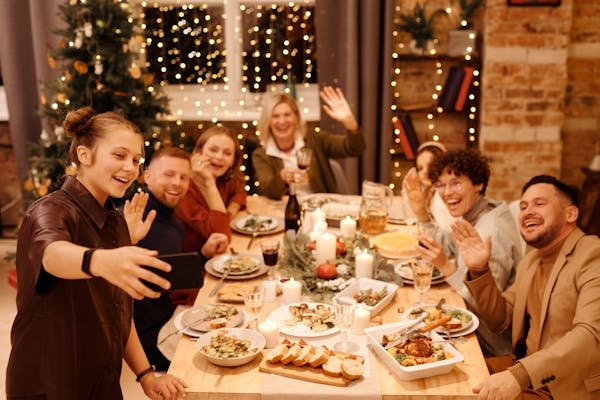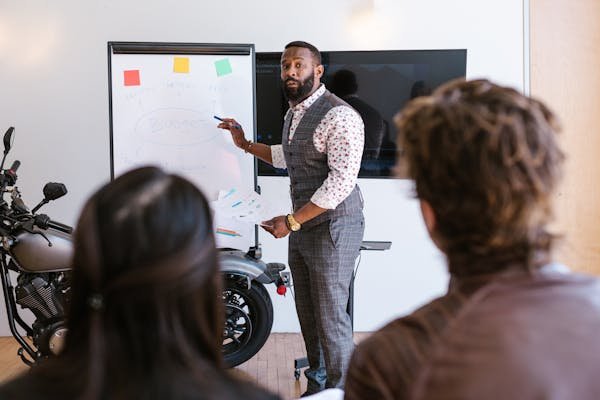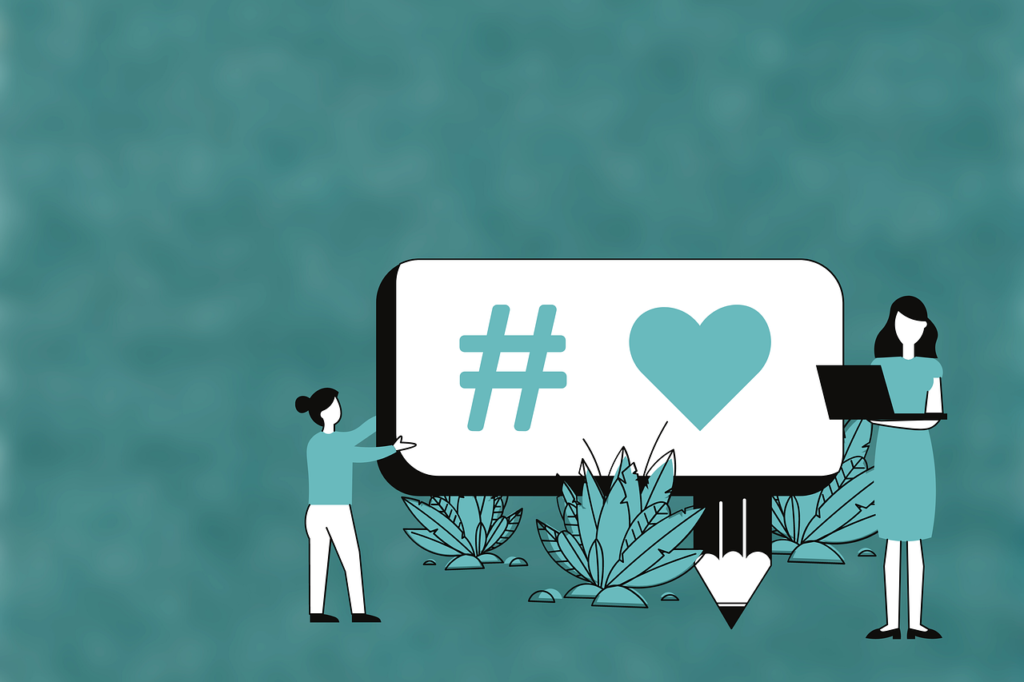In today’s digital age, social media plays a pivotal role in driving engagement for events. Whether it’s a corporate conference, a music festival, or a local workshop, leveraging social media can significantly boost participation, interaction, and overall success. This article will provide you with actionable strategies to maximize event engagement through social media, ensuring your event stands out and leaves a lasting impact.
Pre-Event Engagement

Pre-event engagement is crucial for building excitement and ensuring a high turnout. By strategically leveraging social media, you can create a buzz, engage with your audience, and set the stage for a successful event. Here are some advanced strategies to maximize your pre-event engagement.
Create a Buzz Early
Building anticipation for your event should start well in advance. Begin by announcing the event on all your social media platforms. Use a mix of posts, including eye-catching visuals, short videos, and engaging captions to grab attention. Consistently share updates to keep your audience informed and excited.
Host a countdown campaign to build excitement as the event approaches. Start a few weeks out and share daily or weekly countdown posts highlighting different aspects of the event, such as keynote speakers, special sessions, or exclusive activities. Use high-quality graphics and compelling language to make these posts stand out.
Encourage your followers to share their excitement by using a unique event hashtag. Offer incentives such as early-bird discounts or entry into a giveaway for those who use the hashtag. This not only spreads the word but also creates a sense of community among potential attendees.
Develop a Content Calendar
A well-structured content calendar is essential for consistent and effective pre-event engagement. Plan your social media content to ensure regular updates and diverse posts. This helps maintain interest and keeps your event top of mind.
Your content calendar should include a mix of promotional posts, behind-the-scenes content, speaker spotlights, and interactive posts. Schedule these posts at optimal times for maximum reach and engagement. Use analytics from previous posts to determine the best times to post.
Include a variety of content formats, such as videos, infographics, and blog posts, to keep your feed interesting. Highlight different aspects of the event to appeal to a broad audience. For example, share a video interview with a keynote speaker one day, and an infographic about the event’s schedule the next.
Leverage Influencers and Partners
Collaborating with influencers and partners can significantly extend your reach and credibility. Identify influencers within your industry or community who have a strong following and align with your event’s theme. Reach out to them with a clear proposal on how they can promote your event.
Offer influencers exclusive content or behind-the-scenes access to create authentic and engaging posts. This could include sneak peeks of the event setup, interviews with speakers, or previews of special activities. Authentic endorsements from trusted influencers can drive significant interest and engagement.
Engage with your event partners to cross-promote the event. Encourage them to share your event on their social media platforms and provide them with promotional materials to make it easy. Highlighting partnerships also adds credibility and can attract their followers to your event.
Host Pre-Event Webinars or Live Q&A Sessions
Hosting pre-event webinars or live Q&A sessions can generate excitement and provide valuable information to potential attendees. Use platforms like Instagram Live, Facebook Live, or YouTube to host these sessions.
Promote these sessions well in advance to build anticipation. Encourage your audience to submit questions beforehand and during the live session. This not only provides useful information but also engages your audience and makes them feel involved.
Record these sessions and share highlights or the full recording on your social media channels for those who couldn’t attend live. This ensures that the content reaches a broader audience and continues to generate interest in your event.
Create Shareable Content
Creating content that is highly shareable can help spread the word about your event organically. Design visually appealing graphics, infographics, and short videos that are easy for your audience to share on their own profiles.
Use engaging and informative content that adds value. For example, create infographics that provide tips related to your event’s theme or short, informative videos that highlight key benefits of attending. The more valuable and engaging the content, the more likely it is to be shared.
Encourage sharing by running social media contests. Ask your followers to share your event post and tag friends for a chance to win free tickets or exclusive event merchandise. This not only increases visibility but also creates a sense of excitement and urgency.
Utilize Paid Advertising
Strategically using paid advertising can boost your event’s visibility and reach a larger audience. Platforms like Facebook, Instagram, and LinkedIn offer targeted advertising options that can help you reach your ideal attendees.
Create eye-catching ads with strong calls to action. Use targeted demographics to ensure your ads reach the right audience. For example, if you’re hosting a tech conference, target professionals in the tech industry within a certain geographic area.
Monitor the performance of your ads and adjust your strategy as needed. Use A/B testing to determine which ad creatives and messaging resonate best with your audience. This data-driven approach can help you maximize your ad spend and ensure a high return on investment.
By implementing these advanced strategies for pre-event engagement, you can build excitement, engage with your audience, and set the stage for a successful event. Each tactic not only helps in spreading the word but also creates a strong connection with potential attendees, ensuring they are informed, excited, and ready to participate.
Engaging Content Ideas
Creating engaging content is essential for maximizing event engagement on social media. The right content not only captures attention but also encourages interaction and participation. Here are some strategic and actionable content ideas to keep your audience engaged and excited about your event.
Behind-the-Scenes Content
People love getting a glimpse behind the scenes. Sharing this type of content helps build excitement and gives your audience a sense of connection to the event. This could include preparations, team meetings, venue setup, and interviews with organizers or speakers.
Host live behind-the-scenes tours using Instagram Live or Facebook Live. Encourage viewers to ask questions and interact with the stream to make them feel part of the process. You can also create short, daily clips leading up to the event, showcasing different aspects of the preparation. This not only builds anticipation but also humanizes your brand by showing the hard work and dedication that goes into organizing the event.
Countdown Posts
Countdown posts are an effective way to build anticipation as the event date approaches. Start a countdown series a week or two before the event, highlighting different aspects each day. For example, you could count down the top reasons to attend, showcase key speakers, or reveal special surprises planned for the event.
Create visually appealing graphics for your countdown posts. Use vibrant colors, engaging images, and clear typography to make these posts stand out in users’ feeds. Incorporate interactive elements, such as polls or questions, to encourage engagement. For example, ask your audience what they are most excited about or what sessions they are looking forward to attending.
Interactive Content
Interactive content is a great way to engage your audience and encourage participation. Polls, quizzes, and contests can be fun and engaging, providing value while promoting your event.
Develop themed quizzes that relate to your event’s topic. For example, if you’re hosting a marketing conference, create a quiz about digital marketing trends. Share the quiz results and encourage participants to share their scores on social media. This not only drives engagement but also spreads awareness of your event as participants share with their networks.
Run contests that require participants to share your event on their social media for a chance to win free tickets or exclusive merchandise. Create a unique hashtag for the contest and encourage participants to use it. This not only increases engagement but also expands your event’s reach as participants share with their networks.
Speaker Spotlights
Highlighting your event speakers can generate excitement and add credibility to your event. Create dedicated posts that introduce each speaker, their background, and what they will be discussing at the event.
Share video interviews or short clips of speakers discussing their upcoming sessions. This gives your audience a taste of what to expect and builds anticipation. Encourage speakers to share these posts on their own social media channels to reach a wider audience.
Develop a series of posts leading up to the event, each focusing on a different speaker. Include quotes, professional achievements, and interesting facts to make these posts engaging. Tag the speakers in your posts to increase visibility and foster a sense of community.
User-Generated Content
Encourage your audience to create and share content related to your event. User-generated content (UGC) is highly effective for building community and increasing engagement.
Create a campaign encouraging attendees to share their excitement about the event using a specific hashtag. Feature the best posts on your social media channels. This not only provides you with fresh content but also makes participants feel valued and involved.
Host a pre-event challenge where participants share photos or videos related to the event’s theme. Offer prizes for the most creative entries to incentivize participation. This can generate buzz and excitement leading up to the event.
Event Teasers
Share teasers that give a sneak peek of what’s to come. This could include glimpses of the venue, previews of special activities, or hints about surprise guests.
Create short, engaging videos that highlight key elements of the event. Use dynamic visuals, upbeat music, and compelling narration to capture attention. Share these teasers across all your social media platforms to reach the widest audience possible.
Collaborate with influencers or speakers to create teaser content. For example, a speaker could share a hint about their session topic or a behind-the-scenes look at their preparation. This adds a layer of authenticity and excitement to your promotions.
Interactive Stories
Utilize Instagram and Facebook Stories to share real-time updates and interactive content. Stories are a great way to keep your audience engaged with daily updates and exclusive content.
Use features like polls, questions, and countdown stickers to make your Stories interactive. For example, create a poll asking which session attendees are most excited about or use a question sticker to gather input on what they hope to learn.
Share behind-the-scenes clips, speaker spotlights, and attendee testimonials through Stories. Highlight user-generated content by sharing posts from attendees who are excited about the event. This real-time engagement helps maintain excitement and fosters a sense of community.
Infographics and Visual Content
Infographics and visual content are highly shareable and can effectively convey important information about your event. Create infographics that detail the event schedule, highlight key speakers, or showcase interesting statistics related to the event’s theme.
Ensure your visuals are high-quality and professionally designed. Use a consistent color scheme and branding elements to maintain a cohesive look. Share these visuals across all your social media platforms and encourage followers to share them with their networks.
Develop a series of infographics that gradually reveal more details about the event. This can help build anticipation and provide valuable information in a visually appealing format.
During the Event
Maximizing engagement during your event is crucial for maintaining excitement and ensuring a memorable experience for attendees. Here are some advanced strategies to keep your audience engaged and create a dynamic event atmosphere through social media.
Live Updates and Coverage
Real-time updates are essential for keeping both attendees and non-attendees informed and engaged. Use a multi-platform approach to share live updates on your event.
Create a dedicated social media team to handle live updates. Assign specific roles such as live tweeting, managing Instagram Stories, and streaming on Facebook Live. This ensures continuous coverage across all platforms without overwhelming any one person.
Leverage live video to capture key moments and share them as they happen. Stream major sessions, keynote speeches, and behind-the-scenes moments. Encourage viewers to interact with the live stream by asking questions or sharing their thoughts using a specific hashtag.
Regularly post photos and short videos of the event on Twitter and Instagram. Highlight attendee experiences, showcase different sessions, and capture the overall atmosphere. Tag attendees and speakers to increase visibility and foster a sense of community.

Interactive Sessions
Incorporate interactive elements into your event to boost engagement and make sessions more dynamic. Use social media to facilitate Q&A sessions, polls, and live voting.
During sessions, encourage attendees to tweet their questions using the event hashtag. Display a live feed of these questions on a screen so speakers can address them in real-time. This not only engages the audience but also makes them feel heard and involved.
Use platforms like Slido or Mentimeter to conduct live polls and gather instant feedback. For example, you can ask attendees to vote on topics they’d like to hear more about or to rate the session’s effectiveness. Share the results on social media to keep the online audience engaged as well.
Host interactive workshops or breakout sessions where attendees can collaborate and share ideas. Use social media to facilitate these discussions, encouraging participants to share their insights and takeaways. This creates a more participatory environment and enhances the learning experience.
Photo and Video Sharing
Encourage attendees to capture and share their experiences throughout the event. Create visually appealing and branded “selfie spots” or photo booths with your event’s logo and hashtags.
Offer incentives for sharing, such as entry into a prize draw for the best photo or video. Promote a photo or video contest where attendees can submit their entries using a specific hashtag. Highlight the best submissions on your social media channels, giving recognition and prizes to winners.
Hire professional photographers and videographers to capture high-quality content throughout the event. Share these photos and videos on your social media platforms, tagging attendees and speakers. This not only boosts engagement but also provides a repository of content that can be used for future promotion.
Real-Time Engagement with Attendees
Maintain an active presence on social media during the event by responding to comments, retweeting attendee posts, and engaging with their content.
Designate team members to monitor social media channels and interact with attendees. Promptly reply to questions, thank attendees for their participation, and address any issues that arise. This real-time engagement shows that you value their presence and enhances their overall experience.
Encourage attendees to share their highlights and experiences using a specific event hashtag. Share user-generated content on your official channels, giving credit to the creators. This not only expands your event’s reach but also builds a sense of community and participation.
Exclusive Content and Announcements
Provide exclusive content and make important announcements via social media to keep attendees tuned in and engaged.
Share exclusive interviews with speakers, behind-the-scenes tours, or special announcements about upcoming sessions. Use Instagram Stories and Facebook Live to broadcast these updates, making attendees feel like they’re getting insider access.
Make major announcements, such as the unveiling of next year’s event location or the introduction of a surprise guest, through live streams or social media posts. This creates excitement and encourages attendees to stay connected throughout the event.
Networking Opportunities
Facilitate networking opportunities for attendees using social media. Create dedicated groups or channels where participants can connect and engage with each other.
Set up a private Facebook group or LinkedIn event page where attendees can introduce themselves, share their interests, and plan meetups. Encourage discussions by posting conversation starters and facilitating introductions.
Use platforms like Twitter and Instagram to promote networking activities. Share posts about networking breaks, social events, or dedicated networking sessions, and encourage attendees to use the event hashtag to connect with others.
Interactive Exhibitor and Sponsor Content
Ensure that exhibitors and sponsors also get the spotlight by encouraging them to share interactive content on social media.
Coordinate with exhibitors and sponsors to create engaging posts, such as product demos, exclusive offers, or giveaways. Share this content on your event’s social media channels and encourage attendees to visit exhibitor booths and participate in sponsor activities.
Promote sponsor-hosted sessions or workshops through live updates and posts. Highlight the value and insights these sessions offer, and encourage attendees to share their takeaways on social media.
Post-Session Discussions
Encourage post-session discussions on social media to extend engagement beyond the live sessions.
After each session, share a summary or key takeaways on your social media channels. Prompt attendees to share their thoughts, questions, and reflections using the event hashtag. This keeps the conversation going and allows for deeper engagement.
Host live Q&A sessions or panel discussions with speakers after their sessions. Use platforms like Instagram Live or Twitter Spaces to facilitate these discussions and allow attendees to interact directly with the speakers.
Post-Event Engagement

Post-event engagement is crucial for maintaining the momentum built during the event and ensuring that the impact resonates long after it ends. Here are some advanced strategies to maximize post-event engagement through social media, designed to help startup founders make the most of their event follow-up efforts.
Recap and Highlights
After the event, share a comprehensive recap and highlights to remind attendees of the valuable experiences they had and to inform those who couldn’t attend.
Create a highlight reel video that captures the essence of the event, featuring key moments, speaker snippets, and attendee interactions. Use engaging captions to summarize the content and share it across all your social media platforms. This not only serves as a reminder but also as promotional material for future events.
Write a detailed blog post or an article summarizing the event. Include key takeaways, notable quotes from speakers, and statistics about attendance and engagement. Share this post on social media and encourage attendees to share their experiences and add their comments.
Gather Feedback
Soliciting feedback from attendees is essential for continuous improvement and demonstrating that you value their opinions.
Use social media to share links to feedback surveys or post-event evaluation forms. Make these surveys easy to complete and accessible from all devices. Encourage honest feedback by ensuring anonymity if necessary.
Ask specific questions about different aspects of the event, such as the content, speakers, venue, and overall experience. Use open-ended questions to gather detailed insights. Share a summary of the feedback you received and outline any actions you plan to take in response. This transparency builds trust and shows your commitment to improvement.
Keep the Conversation Going
Maintain engagement by continuing the conversation even after the event has ended. Share follow-up content such as detailed session summaries, speaker presentations, and additional resources.
Create a series of posts that delve deeper into topics discussed at the event. For example, if a speaker discussed emerging trends in technology, share articles, infographics, or interviews that explore these trends further. Encourage attendees to share their own reflections and insights from the event.
Use social media groups or event-specific forums to facilitate ongoing discussions. Encourage participants to share their key takeaways, ask follow-up questions, and network with each other. This fosters a sense of community and keeps the event’s impact alive.
Share User-Generated Content
User-generated content (UGC) is a powerful tool for maintaining engagement and extending the event’s reach.
Encourage attendees to share their photos, videos, and experiences from the event using a specific hashtag. Monitor this hashtag and share the best content on your social media channels, giving credit to the creators. This not only increases engagement but also provides authentic content that highlights the event’s success.
Host a post-event UGC contest where participants can submit their favorite moments from the event. Offer prizes for the best submissions and feature them on your social media platforms. This encourages ongoing participation and keeps the excitement alive.
Highlight Success Stories and Testimonials
Showcase success stories and testimonials from attendees and speakers to highlight the event’s impact.
Create a series of posts featuring attendee testimonials, both written and video. Share their positive experiences and key takeaways, emphasizing how the event provided value. Tag the attendees and speakers to increase visibility and encourage them to share the posts with their networks.
Develop case studies or success stories that demonstrate the tangible benefits attendees gained from the event. For example, if the event was a networking conference, highlight how attendees made valuable connections that led to business opportunities. Share these stories on your social media and website.
Announce Future Events
Use the momentum from your current event to build anticipation for future events.
Announce the dates and key details of your next event soon after the current one ends. Share early bird registration information, teaser content, and special offers to encourage early sign-ups. Use the positive energy and engagement from your recent event to drive interest in the next one.
Create a countdown to your next event with regular updates and teasers. Highlight what’s new, who will be speaking, and any exciting changes or additions. This keeps your audience engaged and looking forward to your future events.
Repurpose Content
Repurposing content from your event allows you to extend its life and reach a broader audience.
Convert recorded sessions into on-demand webinars or video series. Share these videos on your social media platforms, website, and YouTube channel. This provides ongoing value to attendees who missed the live sessions and attracts new audience members interested in the content.
Turn speaker presentations and keynotes into blog posts, articles, or downloadable resources. Share these on your social media and website, offering them as valuable resources for your audience. Promote these pieces regularly to keep the content fresh and engaging.
Personalize Follow-Up Communications
Personalized follow-up communications can make attendees feel valued and appreciated, enhancing their overall experience and fostering loyalty.
Send personalized thank-you messages to attendees, speakers, and sponsors. Use social media direct messages, emails, or even handwritten notes to express your gratitude. Mention specific moments or contributions that made their participation special.
Create personalized content for different segments of your audience. For example, share targeted resources or follow-up content based on the sessions attendees participated in or the feedback they provided. This shows that you’ve listened to their needs and are committed to providing ongoing value.
Conclusion
Maximizing event engagement with social media is an essential strategy for ensuring the success and longevity of your events. By strategically leveraging social media before, during, and after your event, you can create a dynamic and engaging experience that resonates with your audience and extends the event’s impact.
From building anticipation with teaser posts and leveraging influencers to sharing real-time updates and encouraging interactive sessions, each stage of your event offers unique opportunities to engage with your audience. Post-event strategies, such as sharing highlights, gathering feedback, and keeping the conversation going, help maintain the momentum and foster a sense of community.
Read Next:
- Developing a Content Strategy for Financial SEO
- Advanced Link-Building Tactics for Financial Websites
- Core Web Vitals: Why Page Speed Matters in Financial SEO
- Mobile-First SEO for Financial Services
- Structured Data and Schema Markup for Financial Websites






















Comments are closed.